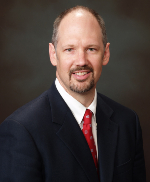In 2017, conservative scholar Charles Murray was met with protests during his lecture in Middlebury College. However, much of the controversy did not stem from his political beliefs but from his 1994 book The Bell Curve in which he argued that racial group intelligence is variable. Later in the
Fall-to-Fall 2016-2017 Student success is critical to the mission of every higher educational institution. All other things being equal, students who are the most intellectually and psychologically prepared for higher education will be the most successful. While most universities assess the
Would you consider taking on the presidency of an institution in need of a turn-around? If so, in this blog I’ll introduce several Turn-around Principles you’ll need to keep in mind before taking on the challenge. Consider the following scenario (which is not derived from the experience of any
Whether it’s the end of a successful Presidency or a board’s decision to seek new leadership, Presidential transition is never easy. It’s risky, time consuming and expensive and that’s before factoring in a level of cultural uncertainty as a new President takes the helm. And the experts are
A slow plodding revenue growth strategy may no longer provide private colleges with the financial reserves needed to survive. For decades, marginal increases in enrollment, tuition, and other revenue sources were good enough to cover expenses and provide a cash buffer against unforeseen
Too many budget-enrollment and net tuition strategies are based on finding just enough new students to cover next fiscal year’s budget expense. This strategy worked fine when colleges tended to stay within their own markets, labor costs were low for skilled positions, and technology was not
Presidential transitions are never easy, neither for the president nor for the institution. No matter how effective the transition plan, there is always disorientation with loss of momentum. Some institutions and individuals weather transitions seemingly without any difficulty; they are
The Wall Street Journal, Chronicle of Higher Education, and the New York Times are trumpeting what they see as major changes in demographics, finances, technology, and regulations. The evidence strongly suggests that these four factors are already having a significant impact on the financial
Meeting this country’s workforce needs is a critical issue that is defining the future of the United States, individual states and our local communities. The quality and availability of the workforce is a vital strategic asset that will determine world order and security. Technology will
Economic equilibrium is a state of long-term financial sustainability for an institution of higher education. Richard Cyert, who developed the concept, set these conditions for a state of economic equilibrium: There is sufficient quality and quantity of resources to fulfill the mission of an

 John Stevens, Ed.D.
John Stevens, Ed.D. Brendan Leonard, M.B.A.
Brendan Leonard, M.B.A.